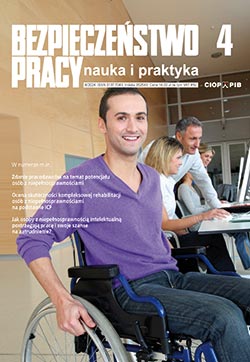Physical activity as a determinant for dealing with occupational stress
JOANNA ROSAK-SZYROCKA
Occupational stress contributes to the emergence and exacerbation of many health disorders, fosters accidents at work and reduces work efficiency, thus disrupting the functioning of companies and causing material losses. Stress is also unfavorable for the state, as a result of stress the state incurs costs related to the treatment of employees and the necessity to pay benefits due to the deterioration of the employed health. The paper discusses occupational stress in the aspect of taking up physical activity by employees who started working remotely during the pandemic. It has been shown that taking up physical activity promotes the fight against stress, helps to distance yourself from problems related to work, but also has a positive effect on the overall quality of employees’ life. The results of the research also showed that taking up physical activity such as running allows employees to relax, rest and thus take care of mental hygiene.
DOI: 10.5604/01.3001.0014.9357
Physiological tremor – the influence of selected external factors. Literature review
JOANNA MAZUR-RÓŻYCKA, JAN GAJEWSKI
The article deals with issues related to the phenomenon of physiological muscle tremors, which occur in all people albeit with varying degrees of intensity. The influence of external factors (i.e. stimulants, fatigue, sleep deprivation) on physiological muscle tremors was described in the text. In case of the increased muscle tremor, there may be reduced motor skills and weakened eye-motor coordination, which may in effect reduce the precision of activities.
DOI: 10.5604/01.3001.0014.9358
Enteropathogenic viruses in occupational environment of wastewater treatment plants
RAFAŁ L. GÓRNY
Wastewater is a potential source of pathogenic viruses. Hence, wastewater treatment plants’ workers may be exposed to these harmful biological agents during their occupational activities. The sources of these pathogens may be bioaerosols, emitted during technological processes, as well as sewage, sewage sludge or contaminated industrial surfaces. Exposure to viral pathogens may cause various diseases and adverse health effects including both intestinal and parenteral infections. Therefore, a reliable risk assessment and an appropriate containment measures are considered key factors in the prevention of occupational hazards among this group of workers.
DOI: 10.5604/01.3001.0014.9360
Meat production and related occupational exposure to harmful biological agents
ANNA ŁAWNICZEK-WAŁCZYK
The increase in consumer demand for meat in Europe has led to the development of many new slaughterhouses and meat product plants, and Poland remains the 7th largest exporter of meat in the world, with a share of 4.3%. Unfortunately, industrial animal farming and meat production involves the risk of exposing workers to many a harmful bacteria, fungi, viruses and parasites of animal origin. This paper presents the most important zoonotic factors and the routes of their spread in slaughterhouses, meat cutting and meat processing plants, and discusses basic preventive measures.
DOI: 10.5604/01.3001.0014.9361




























